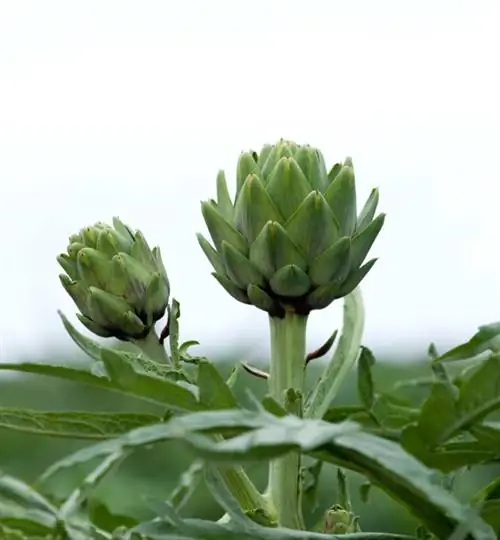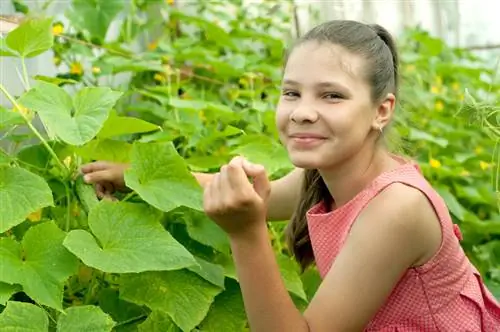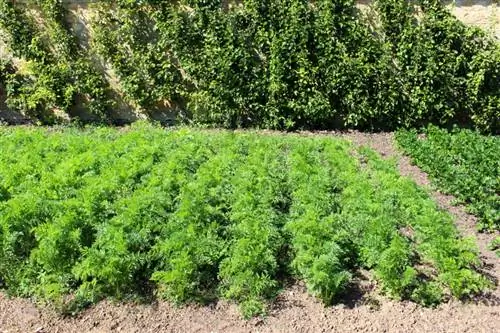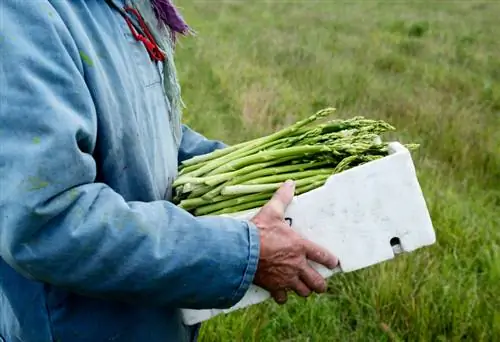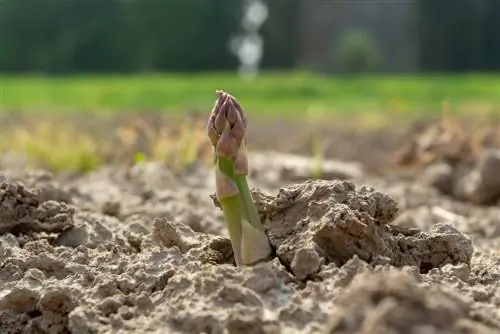- Author admin [email protected].
- Public 2023-12-25 17:45.
- Last modified 2025-06-01 06:02.
The artichoke is one of the exotic ornamental and vegetable plants. Their flowers beautify any garden. Leisure gardeners who follow these tried-and-tested recommendations when growing will enjoy an attractive ornamental and medicinal plant as well as a culinary delicacy.
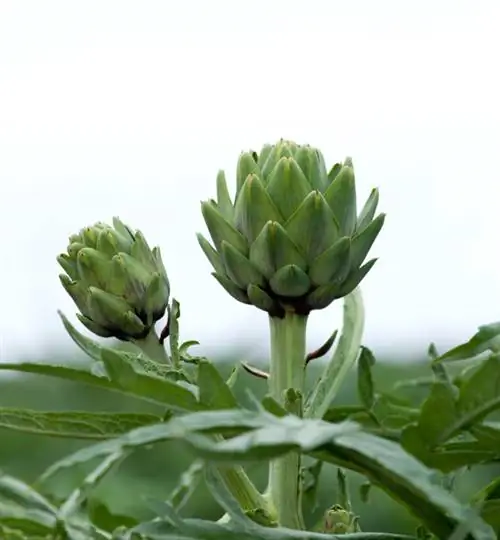
How to grow artichokes in the garden?
When growing artichokes, a warm, sunny and wind-protected location with loose, nutrient-rich soil is crucial. Sowing takes place in February and planting outdoors in May. The harvest season begins from the age of 2. Artichokes should be cut back and protected for the winter.
Anyone who manages to cultivate the prickly noble plant in their garden benefits from its external beauty and valuable ingredients. The artichoke has a cholesterol-lowering, detoxifying and stimulating effect. Under ideal growth and location conditions, you can admire the flowers and enjoy their fruits for 3, 4 or even 5 years.
Location and artichoke plants
Artichokes love a warm, sunny and wind-protected location. As deep-rooters, they prefer loose, nutrient- and humus-rich soil. Artichokes can be grown on the windowsill or planted outdoors as direct seeds. If you want to harvest artichokes in the same year, you should start sowing in February. It's best to sow three seeds per seed tray (€35.00 on Amazon) and only cultivate the strongest plants. The ideal germination temperature is between 20 and 25 degrees. In mid-May you can grow the artichoke plants outdoors at a distance of 60 centimeters.
Variety selection based on regional climate
In order to successfully grow an artichoke, you should choose a variety that can tolerate the regional climate. The purple artichoke, for example, is extremely sensitive to rain and loves sun. The robust variety “Große von Laon”, on the other hand, can also tolerate cold, damp weather. The most famous artichoke varieties:
Great of Laon - edible, cold-tolerant, proven variety
Kardy - edible, cold-tolerant and richly flowering ornamental artichoke
Orlando F1 - edible, tasty and thornless artichokeMadrigal F1 - edible, medium early and large budded variety
Harvest time from the age of 2
From the age of 2 you can harvest your artichokes from summer to late autumn. The fruits are ripe as soon as the outer leaves open. Then it is harvest time, because the edible soil becomes inedible when the artichoke blooms. Therefore, remove the flower heads before they bloom. Both the flower base and the bracts are considered delicacies worldwide.
Overwintering artichokes safely
If the artichoke leaves turn yellow in late autumn, cut back the long flower stalks and tie the leaves together loosely. The runners remain on the cane for division in the spring. A layer of straw with an additional fleece cover offers optimal winter protection. To avoid moisture damage, uncover the plants again in April.
Tips & Tricks
Do you want to overwinter your artichoke safely? Then take the plant and its roots out of the ground and store them in a box of sand in the basement at 15° degrees.

